Alendronic acid,98.0%
产品编号:Bellancom-B0631| CAS NO:66376-36-1| 分子式:C4H13NO7P2| 分子量:249.10
Alendronic acid,一种双膦酸盐,是法呢基二磷酸合酶 (FDPS) 抑制剂。Alendronic acid 抑制破骨细胞介导的骨吸收。Alendronic acid 对绝经后骨质疏松症,恶性高钙血症和 Paget 病具有疗效。
本网站销售的所有产品仅用于工业应用或者科学研究等非医疗目的,不可用于人类或动物的临床诊断或者治疗,非药用,非食用,
Alendronic acid
| 产品介绍 | Alendronic acid,一种双膦酸盐,是法呢基二磷酸合酶 (FDPS) 抑制剂。Alendronic acid 抑制破骨细胞介导的骨吸收。Alendronic acid 对绝经后骨质疏松症,恶性高钙血症和 Paget 病具有疗效。 | ||||||||||||||||
|---|---|---|---|---|---|---|---|---|---|---|---|---|---|---|---|---|---|
| 生物活性 | Alendronic acid, a bisphosphonate, is a farnesyl diphosphate synthase (FDPS) inhibitor. Alendronic acid inhibits osteoclast-mediated bone resorption. Alendronic acid shows efficacy in postmenopausal osteoporosis, malignant hypercalcemia and Paget’s disease. | ||||||||||||||||
| 体外研究 |
Bisphosphonates are widely used in the treatment of osteoporosis, and among the bisphosphonates, alendronic acid is the most frequently prescribed drug. Bisphosphonates have powerful inhibitory effects on bone remodeling, a process that is critically important for fracture healing. 西域 has not independently confirmed the accuracy of these methods. They are for reference only. | ||||||||||||||||
| 体内研究 | |||||||||||||||||
| 体内研究 | |||||||||||||||||
| 性状 | Solid | ||||||||||||||||
| 溶解性数据 |
In Vitro:
H2O : 3.7 mg/mL (14.85 mM; ultrasonic and warming and heat to 60°C) 配制储备液
*
请根据产品在不同溶剂中的溶解度选择合适的溶剂配制储备液;一旦配成溶液,请分装保存,避免反复冻融造成的产品失效。 In Vivo:
请根据您的实验动物和给药方式选择适当的溶解方案。以下溶解方案都请先按照 In Vitro 方式配制澄清的储备液,再依次添加助溶剂:
——为保证实验结果的可靠性,澄清的储备液可以根据储存条件,适当保存;体内实验的工作液,建议您现用现配,当天使用;
以下溶剂前显示的百
*以上所有助溶剂都可在 西域 网站选购。
| ||||||||||||||||
| 运输条件 | Room temperature in continental US; may vary elsewhere. | ||||||||||||||||
| 储存方式 |
| ||||||||||||||||
| 参考文献 |
| ||||||||||||||||
| 危险品运输编码 | 1759 |
|---|---|
| RTECS号 | SZ6521833 |
| 包装等级 | III |
| 海关编码 | 2931900090 |
|
Section I.Chemical Product and Company Identification Chemical Name Alendronic Acid Portland OR SynonymPhosphonic acid, P,P'-(4-amino-1- hydroxybutylidene)bis- (CA INDEX NAME); 4-Amino-1-hydroxybutane-1,1-diphosphonic Acid Chemical FormulaC4H13NO7P2
CAS Number66376-36-1 Section II.Composition and Information on Ingredients Toxicology Data Chemical NameCAS Number Percent (%)TLV/PEL 66376-36-1 Min. 98.0 (T) Not available.Not available. Alendronic Acid Section III. Hazards Identification Acute Health EffectsCorrosive to skin, eyes, and respiratory system. Liquid or spray mist may produce tissue damage, particularly in mucous membranes of the eyes, mouth and respiratory tract. Skin contact may produce burns. Eye contact can result in corneal damage or blindness. Inhalation of the spray mist may produce severe irritation of respiratory tract, characterized by coughing, choking, or shortness of breath. Corrosive materials may cause serious injury if ingested. Follow safe industrial hygiene practices and always wear proper protective equipment when handling this compound. Chronic Health EffectsCARCINOGENIC EFFECTS : Not available. MUTAGENIC EFFECTS : Not available. TERATOGENIC EFFECTS : Not available. DEVELOPMENTAL TOXICITY: Reproductive Effects. Rat TDLo Subcutaneous 2 mg/kg, female 11-20 days of pregnancy TOXIC Effects: Specific Developmental Abnormalities - Musculoskeletal system Repeated exposure of the eyes to a low level of dust can produce eye irritation. Repeated skin exposure can produce local skin destruction, or dermatitis. Repeated inhalation of dust can produce varying degree of respiratory irritation or lung damage. Section IV.First Aid Measures Eye Contact Check for and remove any contact lenses. In case of contact, immediately flush eyes with plenty of water for at least 15 minutes. Get medical attention. Skin ContactIn case of contact, immediately flush skin with plenty of water. Remove contaminated clothing and shoes. Wash clothing before reuse. Thoroughly clean shoes before reuse. Get medical attention. InhalationIf the victim is not breathing, perform mouth-to-mouth resuscitation. Loosen tight clothing such as a collar, tie, belt or waistband. If breathing is difficult, oxygen can be administered. Seek medical attention if respiration problems do not improve. IngestionDO NOT INDUCE VOMITING. Loosen tight clothing such as a collar, tie, belt or waistband. If the victim is not breathing, perform mouth-to-mouth resuscitation. Examine the lips and mouth to ascertain whether the tissues are damaged, a possible indication that the toxic material was ingested; the absence of such signs, however, is not conclusive. Section V.Fire and Explosion Data Not available. Auto-Ignition FlammabilityMay be combustible at high temperature. Flammable Limits Flash PointsNot available. Not available. Combustion ProductsThese products are toxic carbon oxides (CO, CO 2), nitrogen oxides (NO, NO2), phosphates. Fire Hazards Not available. Explosion HazardsRisks of explosion of the product in presence of mechanical impact: Not available. Risks of explosion of the product in presence of static discharge: Not available. Continued on Next Page Alendronic Acid Fire Fighting Media SMALL FIRE: Use DRY chemical powder. and InstructionsLARGE FIRE: Use water spray, fog or foam. DO NOT use water jet. Consult with local fire authorities before attempting large scale fire-fighting operations. Section VI.Accidental Release Measures Spill Cleanup Corrosive material. Stop leak if without risk. DO NOT get water inside container. DO NOT touch spilled material. Use water spray to reduce Instructions vapors. Prevent entry into sewers, basements or confined areas; dike if needed. Eliminate all sources of ignition. Consult federal, state, and/or local authorities for assistance on disposal. Section VII. Handling and Storage CORROSIVE. Keep container dry. Keep away from heat. Mechanical exhaust required. When not in use, tightly seal the Handling and Storage container and store in a dry, cool place. Avoid excessive heat and light. Do not breathe dust. Never add water to this Information product. Wear suitable protective clothing. If you feel unwell, seek medical attention and show the label when possible. Treat symptomatically and supportively. Always store away from incompatible compounds such as oxidizing agents. Section VIII. Exposure Controls/Personal Protection Engineering ControlsUse process enclosures, local exhaust ventilation, or other engineering controls to keep airborne levels below recommended exposure limits. If user operations generate dust, fume or mist, use ventilation to keep exposure to airborne contaminants below the exposure limit. Personal ProtectionFace shield. Lab coat. Dust respirator. Boots. Gloves. A MSHA/NIOSH approved respirator must be used to avoid inhalation of the product. Suggested protective clothing might not be sufficient; consult a specialist BEFORE handling this product. Exposure LimitsNot available. Section IX. Physical and Chemical Properties Physical state @ 20°CSolid. (White ~ light yellow, crystal.)Solubility Not available. Not available. Specific Gravity Molecular Weight249.1Partition Coefficient Not available. Boiling PointVapor Pressure Not available.Not applicable. Not available.Not available. Melting PointVapor Density Refractive IndexNot available.VolatilityNot available. Critical TemperatureNot available.OdorNot available. ViscosityNot available.TasteNot available. Section X.Stability and Reactivity Data Stability This material is stable if stored under proper conditions. (See Section VII for instructions) Conditions of Instability Avoid excessive heat and light. Incompatibilities Reactive with oxidizing agents. Section XI. Toxicological Information RTECS NumberSZ6521833 Routes of ExposureEye Contact. Ingestion. Inhalation. Toxicity DataNot available. CARCINOGENIC EFFECTS : Not available. Chronic Toxic Effects MUTAGENIC EFFECTS : Not available. TERATOGENIC EFFECTS : Not available. DEVELOPMENTAL TOXICITY: Reproductive Effects. Rat TDLo Subcutaneous 2 mg/kg, female 11-20 days of pregnancy TOXIC Effects: Specific Developmental Abnormalities - Musculoskeletal system Repeated exposure of the eyes to a low level of dust can produce eye irritation. Repeated skin exposure can produce local skin destruction, or dermatitis. Repeated inhalation of dust can produce varying degree of respiratory irritation or lung damage. Continued on Next Page Alendronic Acid Acute Toxic EffectsCorrosive to skin, eyes, and respiratory system. Liquid or spray mist may produce tissue damage, particularly in mucous membranes of the eyes, mouth and respiratory tract. Skin contact may produce burns. Eye contact can result in corneal damage or blindness. Inhalation of the spray mist may produce severe irritation of respiratory tract, characterized by coughing, choking, or shortness of breath. Corrosive materials may cause serious injury if ingested. Follow safe industrial hygiene practices and always wear proper protective equipment when handling this compound. Section XII.Ecological Information EcotoxicityNot available. Environmental FateNot available. Section XIII. Disposal Considerations Recycle to process, if possible. Consult your local regional authorities. You may be able to dissolve or mix material with a Waste Disposal combustible solvent and burn in a chemical incinerator equipped with an afterburner and scrubber system. Observe all federal, state and local regulations when disposing of the substance. Section XIV. Transport Information DOT Classification DOT Class 8: Corrosive material PIN Number Proper Shipping Name Corrosive solid, n.o.s. Packing Group (PG)III DOT Pictograms Section XV. Other Regulatory Information and Pictograms TSCA Chemical InventoryThis product is NOT on the EPA Toxic Substances Control Act (TSCA) inventory. The following notices are required by 40 CFR 720.36 (C) for those products not on the inventory list: (EPA) (i) These products are supplied solely for use in research and development by or under the supervision of a technically qualified individual as defined in 40 CFR 720.0 et sec. (ii) The health risks of these products have not been fully determined. Any information that is or becomes available will be supplied on an MSDS sheet. WHMIS Classification CLASS E: Corrosive solid. (Canada) EINECS Number (EEC) Not available. EEC Risk Statements R34- Causes burns. SECTION 16 - ADDITIONAL INFORMATION N/A |
|
~92% 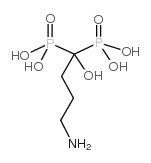
66376-36-1 |
| 文献:ORCHID CHEMICALS and PHARMACEUTICALS LTD. Patent: US2007/66569 A1, 2007 ; Location in patent: Page/Page column 2 ; |
|
~83% 
66376-36-1 |
| 文献:Guenin, Erwann; Monteil, Maelle; Bouchemal, Nadia; Prange, Thierry; Lecouvey, Marc European Journal of Organic Chemistry, 2007 , # 20 p. 3380 - 3391 |
|
~59% 
66376-36-1 |
| 文献:Guenin, Erwann; Monteil, Maelle; Bouchemal, Nadia; Prange, Thierry; Lecouvey, Marc European Journal of Organic Chemistry, 2007 , # 20 p. 3380 - 3391 |
|
~% 
66376-36-1 |
| 文献:WO2005/47282 A1, ; Page/Page column 8 ; |
|
~70% 
66376-36-1 |
| 文献:Xu, Guangyu; Xie, Yuyuan; Wu, Xihan Organic Preparations and Procedures International, 2004 , vol. 36, # 2 p. 185 - 187 |
|
~% 
66376-36-1 |
| 文献:Phosphorus, Sulfur and Silicon and the Related Elements, , vol. 63, # 1/2 p. 181 - 192 |
|
~% 
66376-36-1 |
| 文献:Phosphorus, Sulfur and Silicon and Related Elements, , vol. 129, p. 99 - 110 |
| 上游产品 6 | |
|---|---|
| 下游产品 1 | |
 有竞争力的价格
有竞争力的价格匹配竞争对手的价格
 极速物流
极速物流效率为先
 技术支持
技术支持专业经验 贴心服务
 现货库存
现货库存50000+库存

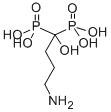
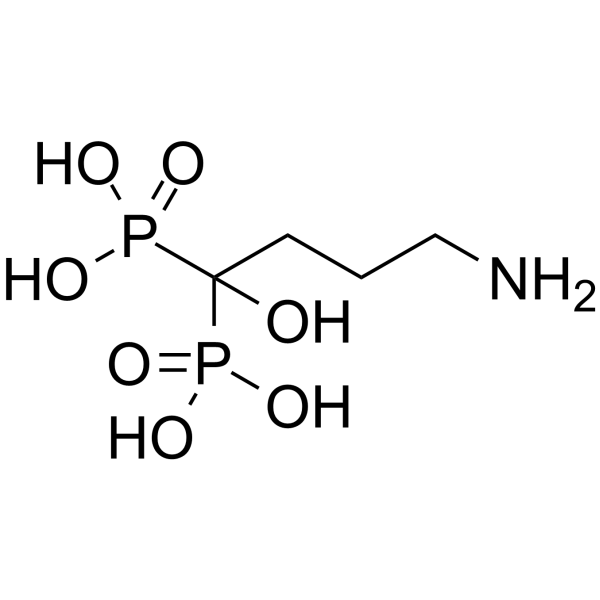
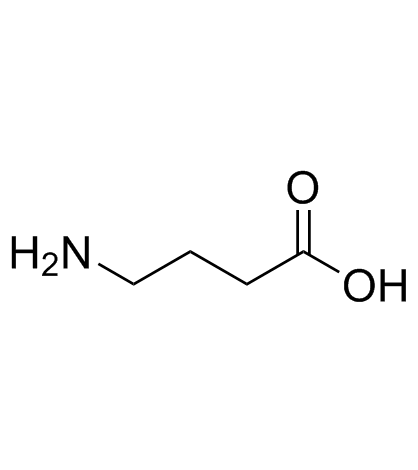

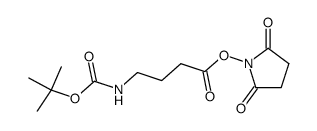
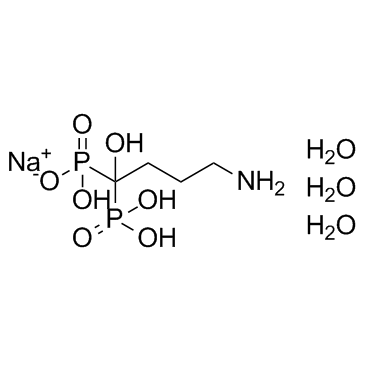
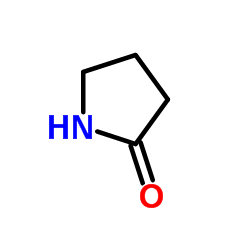
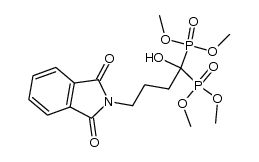
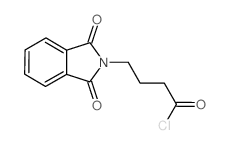

 浙公网安备 33010802013016号
浙公网安备 33010802013016号